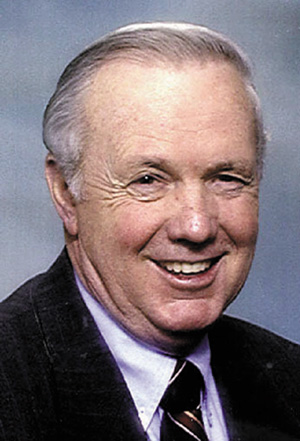No. 603 - DON'T FLOSS YOUR FALSE TEETH
No 603
Jim Davidson — NEWSPAPER COLUMN
DON’T FLOSS YOUR FALSE TEETH
One time an elderly couple went into a fast-food diner and took a seat in a booth near a window. The gentleman went over to the counter, ordered a hamburger and returned to the booth. A lady who was sitting nearby began to observe this elderly couple, and they were sharing the one hamburger. She also began to realize something else. You see, they only had one set of false teeth, and they were sharing those as well.
As the kids would say, “That’s gross," but it sure makes a good point. The point is: If we are going to have our original teeth when we get older, we have to take care of them when we are young. I will confess that I have not taken really good care of my teeth, and have lost some of them as a result. Like most people, I hate to floss and have paid the price for not doing it. The title for this column came to mind as I thought about this, “Don’t floss your false teeth” because it’s a little late then.
There is another consideration here. Data reveals there is a link between how clean teeth and gums are and overall health. There are many ways to clean one’s teeth — some better than others. Over the years we have developed a lot of great technology in different areas, and I was made aware of a new appliance called Dental Air Force that may help a lot of people maintain their teeth, even if they don’t like to floss.
According to a press release from this company, the U.S. Department of Health and Human Services, Office of Disease Prevention and Health Promotion, reports that 80 percent of all adults have some degree of periodontal disease. The cause of this pervasive disease stems from plaque-producing bacteria found in the mouth. The excrement from these anaerobic (lives without air) bacteria provides a furry feeling on teeth upon awakening. The acidic bio-film forms a sticky hydrophobic (water resistant) shield around the tooth, called plaque.
Water alone (oral irrigating or swishing) cannot penetrate this grease barrier to remove plaque. In addition, gums act like a gasket around the tooth, further preventing air or water to reach the bacteria around the gum line, making cleaning especially difficult. The presence of restorations, crowns, bridges, orthodontic appliances, wisdom teeth, implants, periodontal disease, or not flossing, will sustain dangerous levels of bacteria even after brushing.
To reduce the plaque-producing bacteria population in the mouth, one must break through the sticky shield with an abrasive, aerate the site and neutralize the acid. Normal home cleaning methods, like brushing and flossing, have a difficult time accessing the sites between the teeth and doing this where the anaerobic bacteria thrive. The recently developed home appliance that I mentioned earlier, Dental Air Force, uses air, water and a dental cleaner to accomplish what tooth brushing and flossing cannot do.
The dental cleaner formula contains sodium bicarbonate, a natural cleaning agent, to promote a neutral environment. When used with hydrogen peroxide, the system will additionally aerate the environment and whiten teeth similar to professional bleaching. Studies show that Dental Air Force removes 62 percent more plaque between teeth than the leading power toothbrush. Most people brush their teeth, but only 5 percent of the population flosses their teeth, even though the American Dental Society recommends daily flossing.
The founder and inventor of Dental Air Force, Dr. P. Piero states: “What we want to do is provide a tool to use in the home that will provide a more thorough cleaning and change the environment in the mouth to insure the lowest plaque-count possible.” This product is FDA approved. For more information about this product, visit www.dentalairforce.com or call 616-399-8511.
———
(EDITOR’S NOTE: Jim Davidson is a motivational speaker and syndicated columnist. You may contact him at 2 Bentley Drive, Conway, Ark. 72034. To support literacy, buy his book, “Learning, Earning & Giving Back.”)
